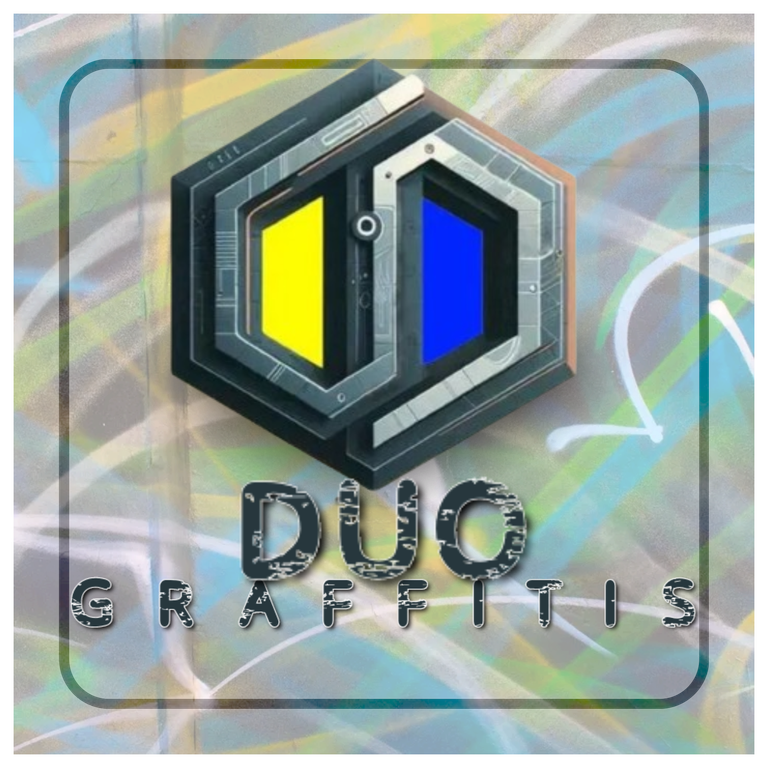Welcome to the first DUO guest author post by @fonestreet, if you are interested in being a guest author be sure to let us know, 50% profit share on the post and 5 DUO tokens are up for grabs!

Graffiti exists in many cities around the world, but have you ever wondered what's behind it?
- Why do these murals adorn the walls of buildings, tunnels and public spaces instead of being considered mere vandalism?
Behind every stroke and every vibrant color, there is a message, a story, a voice crying out to be heard.

Graffiti is an urban art form that reflects the culture, social struggles and identity of entire communities, from the exuberant colors that symbolize hope in tough neighborhoods, to the intricate works that criticize politics and economics, graffiti is a mirror of society.
When you look at graffiti, you see not just an image, but an expression of deep human emotions.
- How do we interpret these artistic manifestations?
- Are they a call to oblivion, a celebration of everyday life, or a provocation to social complacency?
To explore the background of graffiti is to enter a world where art becomes a vehicle for change, dialogue and reflection.

I would like to talk a bit about this subject, as it is something unavoidable to observe; in every direction depending on the locality, there is graffiti that captures the attention of those who pass by, in an era where urban art has taken center stage it is fascinating to question the motivations that drive artists, both those who delve into the world of vandalism and those who prefer to beautify our environments in a more authoritative manner.
The controversy surrounding this phenomenon is extensive and multifaceted, graffiti can be categorized into different artistic expressions which can lead to intense discussions about the meaning and value of this type of art in the midst of all this turmoil emerges a complex artistic expression that although often labeled as vandalism, is a reflection of thoughts, emotions and social situations that seek to be communicated.It is interesting to note that some graffiti writers do not consider themselves artists at all; they see themselves as anarchists and vandals, terms that many of the practitioners of this activity adopt with pride, this view contrasts with the perception of street artists, who focus on beautifying public spaces with their creative witticisms.
This clash of ideologies underscores the diversity of styles and approaches within the graffiti movement creating a rich cultural tapestry that while sometimes polarized generates dialogue and reflection, so the distinction between vandalism and art is not complicated to make especially when you observe a hasty Throw-Up on a subway, and as you exit the station you come across a monumental mural on a building that beautifies the surroundings.
You're unlikely to confuse a transgressive act with a carefully designed work of art, let alone question which deserves more recognition or respect.
Here, instead, we focus on what is happening at the end of this year 2024, a year in which the number of people participating in this activity has grown exponentially.
Cities around the world are experiencing a boom in graffiti both in its expression and in its more critical form in several major cities this trend is taking over the streets, in several major cities this trend is taking over the streets.
There are graffiti that emerge illegally in the heights, some of them so bold that dazzle by their location and execution and a the same time there are also gigantic works that are done with permits, where professional and amateur artists find a way to express their talent, it doesn't matter whether we are in a vibrant metropolis or a slum.
The fascination with writing, design and the intervention of public spaces unites people from diverse backgrounds and contexts, vandal writers often stand out because of the difficulty of the place where they choose to paint a moving train, a wall in a skyscraper, or a dimly lit corner in an alley and the number of locations tagged by these artists reinforces their desire to leave a mark and in some cases, challenge established norms.
- Some graffiti is so risky that many still question how they pulled it off without getting caught, which is a testament to their boldness and creativity.

On the other hand, street artists focus more on carrying messages of peace love and social awareness or simply adorning structures in an artistic way, we have seen hyper-realistic graffiti on buildings that demonstrate the quality and talent that this art can exhibit, transforming ordinary elements into extraordinary ones, these works not only beautify cities, but also invite reflection turning gray walls into vibrant canvases that speak to the surrounding community.






